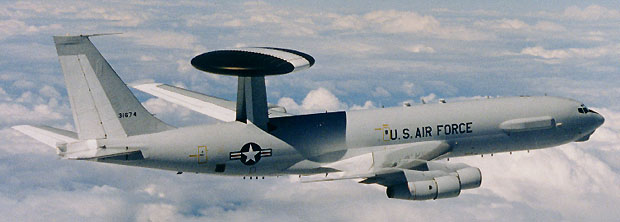How Effective Are Your New Leader Integration Processes?
Many organizations—and most of our clients—use a process to help a new leader (a leader new to a particular role at any level) get a solid start with her or his new team. While various organizations give this process different names, one of the more common monikers is New Leader Integration (NLI). In this post, I’ll:
- Encourage you to ask how effective is your organization’s NLI; and
- Pitch a suggestion to strengthen your NLI—specifically, to consider the number of interactions between leader and direct reports before collecting feedback and facilitating an NLI.
How do NLIs typically work?
The typical practice is that approximately 90 days into a new leader’s role an objective person—for example, an HR business partner or an external leadership coach—facilitates a process through which a leader’s direct reports provide start, stop, and continue feedback and feedforward to the new leader. While the specific timing and details vary for how the process unfolds, the fundamentals are the same.
Are you getting the most from your NLI?
When used effectively, this process can provide a vital start to a new leader’s tenure. However, similar to their 360-degree feedback cousins, NLIs have components that must be implemented well. The questions asked to direct reports must be relevant; direct reports need to feel safe from retribution; the perspectives offered to the new leader should be candid and based on first-hand experience; the leader’s response to the feedback must convey curiosity and a willingness to act.
When done well, NLIs affirm leadership behaviors while identifying and redirecting any potential missteps—an early detection system for leaders and direct reports alike. When done poorly, NLIs offer bland slogans for the new leader—sometimes skirting growing gaps—that can breed eye-rolling cynicism among stakeholders.
Boeing Airborne Early Warning and Control System(AWACS). New Leader Integrations can be an effective early identification system

As an aside, my colleagues and I have observed that an NLI can be particularly useful when the leadership or communication styles of the new leader are significantly different from the previous leader.
Consider timing to strengthen your NLI
While there are several items that contribute to a strong and effective NLI, (i.e. the specific questions asked to direct reports; how the feedback and feedforward is presented to the leader; etc.), I’d like to focus on just one here: timing. Specifically, at what time the NLI is facilitated after the leader starts her or his role.
Our suggestion to leaders and facilitators of NLIs who truly want to mine a New Leader Integration for all of its rich opportunities: consider hosting an NLI after the leader has actually spent time leading or coaching. For some new leaders, the best timing could be 90 days. For most leaders, the best timing could be 140 days or more. The key question: Has the leader spent time meaningfully leading and/or coaching so that direct reports can provide substantive feedback and feedforward?
Three months into a new role can be a good rule of thumb. However, if the 90 day timeframe is applied without considering what the leader did in those 90 days, the feedback from direct reports—and the overall NLI—can be suboptimal. And, unfortunately, misleading for the new leader. Here’s why.
Typical interactions in the first 90 days
Let’s imagine you’ve just been promoted to Regional Sales Director in a mid-size pharmaceutical company. You have 10 District Manager direct reports and each DM has 10 sales professionals in the district. Further, let’s assume that you can spend time with one DM each week. For illustration purposes, I’ve made conservative estimates on the flow.
Here is back-of-the-envelope math for how the first several weeks could look:
- Weeks 1-6: Time in the field with sales professionals, key customers and 1:1 meeting with 1 DM per week. At the end of week 6, you’ve had a touchpoint with 6 of your 10 direct reports.
- During Week 3- Following the 1:1 meeting with the DM this week, you host your first two day leadership team meeting to convene all your DMs.
- Week 7: Time in the field with sales professionals and key customers. Then, attend a 2 day meeting with your VP boss and your Director peers.
- Week 8: Leadership training at home office (Gosh, do you really need to attend?) and meet with your HR Business Partner and Account Executive counterpart.
- Week 9-10: Time in the field with sales professionals, key customers and 1:1 meetings with 2 DMs per week. Due to the close proximity of 4 DMs, you are able to have 1:1 meetings with 2 DMs per week for two weeks. At the end of week 10, you’ve had a touchpoint with all 10 of your direct reports and twice as many sales professionals.
- Week 11: Time with key customers and then a two day meeting with marketing department representatives to learn about your competitor’s imminent launch of a new product.
- Week 12: Time in the field with sales professionals, key customers and 1:1 meeting with 1 DM—who is the only DM who sees you for the second time before the NLI.
- Week 13 (90 days): Your HR Business Partner or Leadership Coach facilitates a New Leader Integration.
Thirteen weeks into your tenure as Director—when your direct reports arrive at the Holiday Inn at the Pittsburgh Airport for the NLI—most of your DM direct reports have only seen you once for 1:1 time, experienced 3-4 Regional team telephone conferences and experienced once how you run a leadership team meeting.
Is that a high enough “N” number for your direct reports to provide meaningful feedback and feedforward?
In some cases it might be; in most cases, we believe this isn’t enough time.
Further diluting the first 13 weeks, many new leaders appropriately implement the Stephen Covey habit of ‘Seek First to Understand, Then to be Understood” and engage in a “Listening Tour” for the first few months in the role. Consequently, in those first 1:1 meetings with direct reports, the new leader demonstrates a narrow range—albeit an important one—of their leadership behaviors.
When facilitating NLIs in these situations, we frequently hear direct reports state some form of the following:
- “He is a great listener, but I can’t comment on his ability to coach me because he hasn’t yet.”
- “I look forward to hearing her direction/expectations for our team; she has been in learning mode for the first 3 months and has stopped short of giving direction.”
- “Since I have had only one meeting with him, there really isn’t anything I would list in the ‘stop’ category. I’d like him to ‘start’ giving his opinions.”
- “We have some serious team issues going on and I know she is taking her time to learn all sides. I wish we were doing this New Leader Integration after she got more involved so I could comment on her ability to resolve team conflict.”
More interactions between leader and direct reports
NLIs aren’t intended to be full-blown 360-dgree feedback instruments. But that doesn’t mean NLIs need to be superficial. As a general rule, consider hosting a New Leader Integration after the new leader has had at least two 1:1 meetings with each direct report and lead two in-person meetings. Realistically, using the assumptions in the hypothetical promotion above, this would require adding an additional 8 weeks (2 months) to the usual 13 weeks for a total of 5 months. Waiting a little longer to host an NLI gives the new leader more opportunities to demonstrate their leadership capabilities and, correspondingly, gives direct reports more interactions from which to provide feedback and feedforward.
In the comments section below, we invite you to share a specific practice that you’ve seen result in a strong, valuable NLI. Whether you were in the role of direct report, leader or the objective person facilitating the overall process, please share your experience.

0 comments
Kick things off by filling out the form below.
Leave a Comment